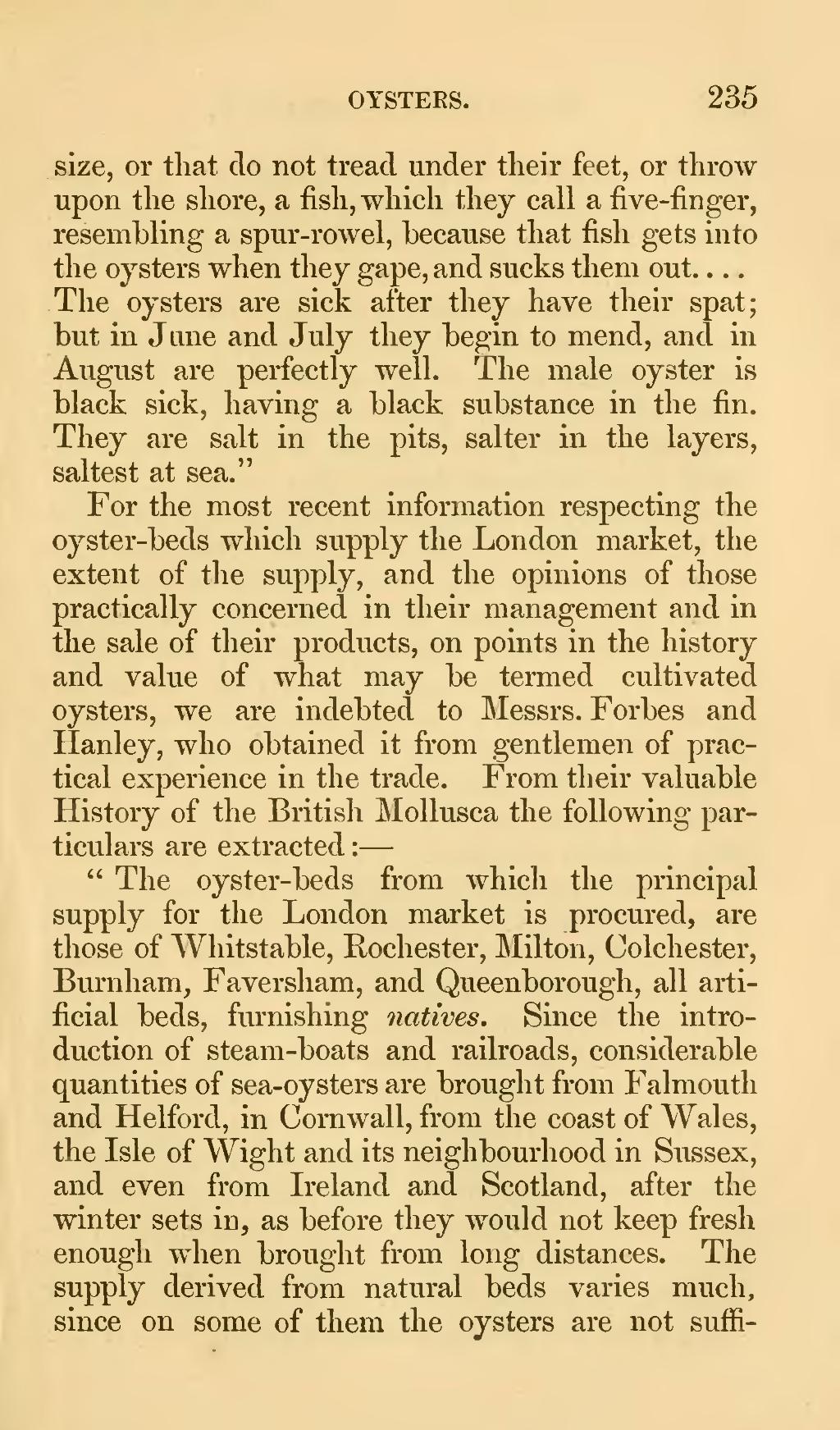size, or that do not tread under their feet, or throw upon the shore, a fish, which they call a five-finger, resembling a spur-rowel, because that fish gets into the oysters when they gape, and sucks them out.... The oysters are sick after they have their spat; but in June and July they begin to mend, and in August are perfectly well. The male oyster is black sick, having a black substance in the fin. They are salt in the pits, salter in the layers, saltest at sea."
For the most recent information respecting the oyster-beds which supply the London market, the extent of the supply, and the opinions of those practically concerned in their management and in the sale of their products, on points in the history and value of what may be termed cultivated oysters, we are indebted to Messrs. Forbes and Hanley, who obtained it from gentlemen of practical experience in the trade. From their valuable History of the British Mollusca the following particulars are extracted:—
"The oyster-beds from which the principal supply for the London market is procured, are those of Whitstable, Rochester, Milton, Colchester, Burnham, Faversham, and Queenborough, all artificial beds, furnishing natives. Since the introduction of steam-boats and railroads, considerable quantities of sea-oysters are brought from Falmouth and Helford, in Cornwall, from the coast of Wales, the Isle of Wight and its neighbourhood in Sussex, and even from Ireland and Scotland, after the winter sets in, as before they would not keep fresh enough when brought from long distances. The supply derived from natural beds varies much, since on some of them the oysters are not suffi-
